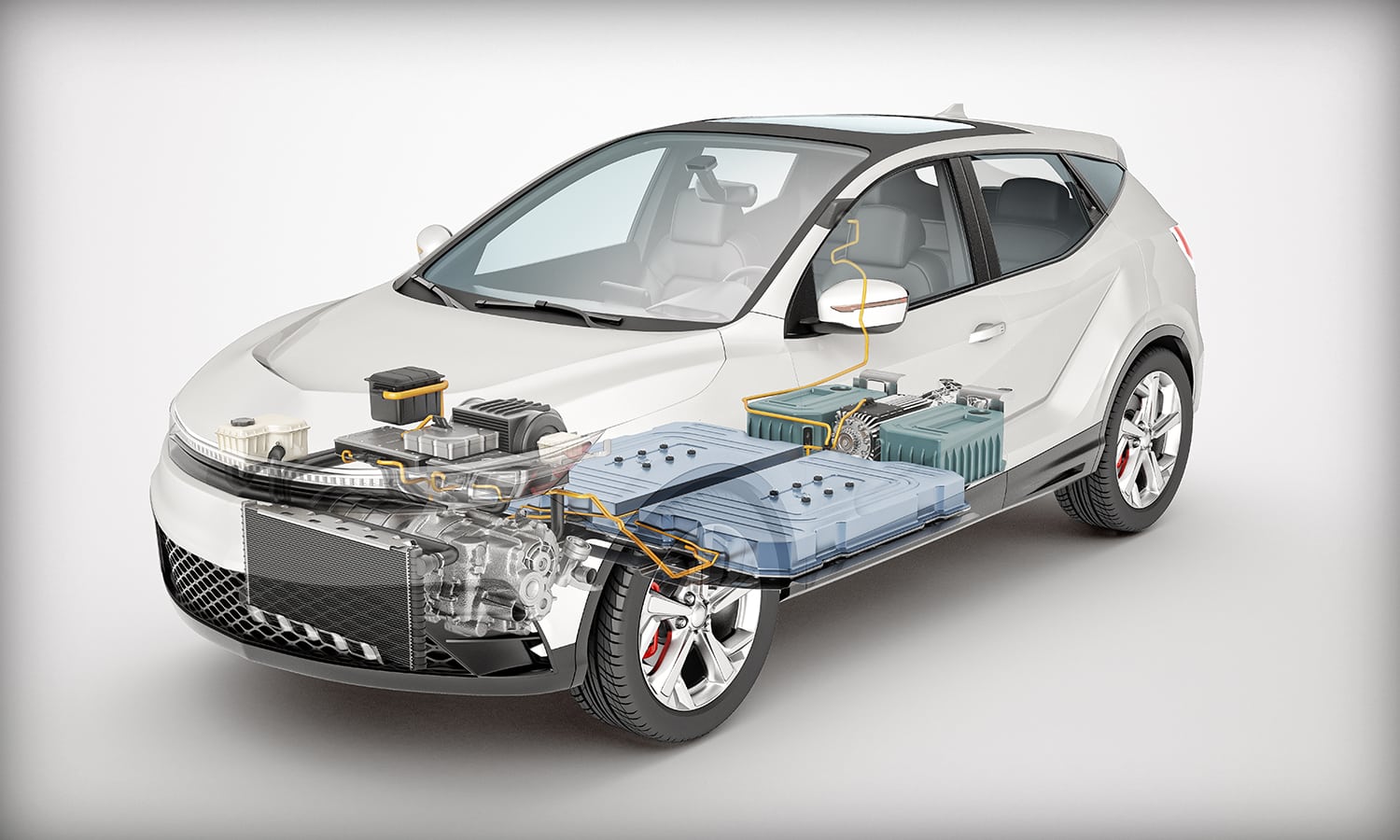
Reliability Engineering & the Automotive Industry
There is a sustained trend toward improved reliability in automotive design where consumer preferences now favour comfort and convenience. The right materials help extend circuit boards’ lifetime and protect them from environmental wear, electromagnetic interference, thermal breakdown, shock and impact resistance. Many of these features are afforded by the digitization and automation of vehicles that rely on computer circuitry to carry out different processes; however, the transition towards automatic operation poses new problems for designers. The integration of multiple digital systems now brings new challenges concerning reliability. The following paragraphs highlight how automotive designers can leverage MG Chemicals’ extensive product portfolio to find solutions to their challenges, including case studies.
Choosing the Right Automotive Adhesive
Adhesives cover a broad family of products used for bonding and secondary functions like thermal management, flame retardancy, and shielding against electromagnetic interference (EMI). Bonding adhesives can be subdivided based on their compressive modulus, which measures how easily a bond joint will compress when subjected to pressure. Adhesives like our 9200, 8332 or 9310 have high compressive moduli and are ideal for bonding structural components or body sealing to withstand frequent shocks and vibrations. These products improve panel stiffening, reduce the need for spot welding and reduce overall weight. Epoxy products cure to a stiff, rigid finish and provide a strong hold. Specialty adhesives like our flame retardant 9200FR can be used as a firewall material to bond battery packs and laminated materials around the powertrain in electric vehicles. Silicone adhesives such as TSE322SK, TN8000 and TN3085 are ideal gasket materials as their elasticity provides the longevity and resilience needed to withstand repeated stress along the bonding joint. It’s also the most typical adhesive chemistry for bonding headlamps.
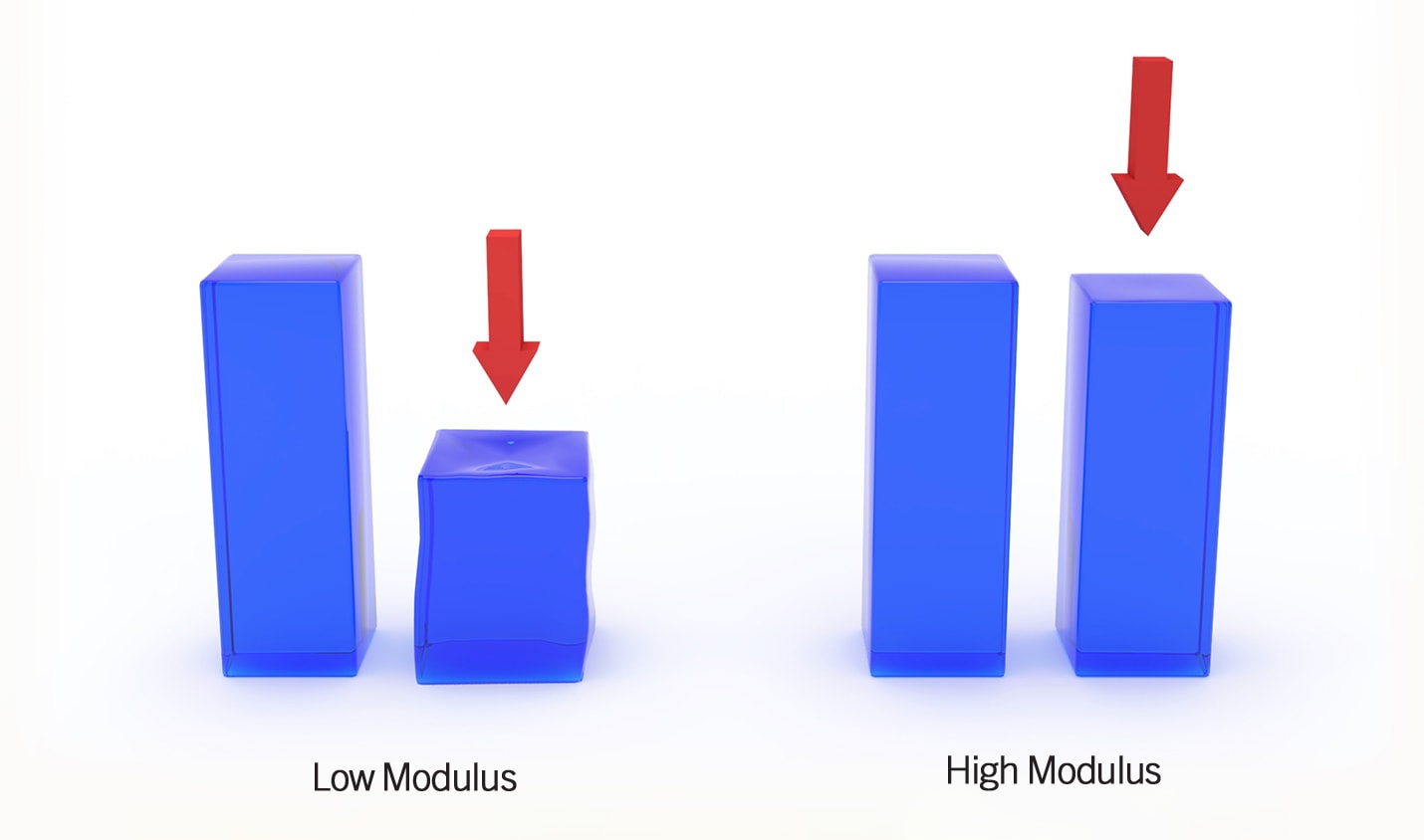
Thermal management is a primary design concern; circuit miniaturization has increased the heat output of vehicle infotainment systems, advanced driver assistance (ADA) systems, engine control units (ECUs), DC-DC power converters and battery systems. MG Chemicals boasts a range of thermally conductive epoxy materials with working times ranging from 5 minutes to unlimited available as a flowable liquid and paste. Choosing which material is appropriate depends on two principal considerations: cure time and consistency. Table 1 below provides a summary of our thermally conductive adhesives along with their key features.
| Working Time | Consistency | Thermal Conductivity (W/mk) |
Suggested Orientation |
|
| 8329TFF | 5 minutes | Flowable | 0.8 | Horizontal |
| 8329TCM | 45 minutes | Paste | 1.4 | Vertical |
| 8349TFM | 20 minutes | Flowable | 1.1 | Horizontal |
| 8329TCS | 4 hours | Paste | 1.4 | Vertical |
| 8329TFS | 4 hours | Flowable | 0.8 | Horizontal |
| 9460TC | Unlimited | Paste | 0.8 | Vertical |
Lower modulus silicone materials are also available, which are ideal materials to use for bond joints subjected to repeated elastic compression or for parts that may require rework. Table 2 summarizes the thermally conductive silicone adhesives that are available.
| Components | Consistency | Cure | Thermal Conductivity (W/mk) |
|
| TIA208R | 2 | Flowable | Addition | 0.8 |
| TIA260R | 1 | Flowable | Addition | 1.4 |
| TIA350R | 1 | Paste | Addition | 1.1 |
| TSE3281 | 1 | Flowable | Addition | 1.4 |
Electrically conductive adhesives are another class of specialty adhesives that use silver to make adhesives capable of conducting an electric current. These materials are used mainly as electrical conduits, trace repair and as an EMI gasket material such as our 9410 that’s used to seal housing units of as protection against radio frequency (RF) interference.
Protective Automotive Coatings
Concerning protective automotive coatings, much of the discussion centers on protective hard coats used to preserve the body paint. Consideration also needs to be shifted towards coatings that protect the various circuit components and conductors, ensuring continued operation and longevity. Within the automotive sector, there are expectations that the conformal coating market will reach near double-digit growth within the next few years, owing to the shift in consumer demand for improved safety and comfort that requires monitoring systems governed by electronics (Automotive Conformal Coatings Market, 2021). Currently, new vehicles come equipped with sensors for in-vehicle air quality systems, automatic braking systems (ABS), airbag actuation and HVAC control. Electronic control units (ECUs) control electrical sub-systems like passenger seating, valve timing, anti-theft systems and electronic braking. PCBs govern the high-precision signal transmissions needed for engine, braking, and safety systems. Overall, the choice of product to use incorporates consideration among many variables, chief among them environmental exposure.
Inside the vehicle cabin, where exposure to harsh chemicals is minimal, thermoplastic acrylic coatings and silicone/acrylic hybrid coatings like our 422B and 422C are ideal. They provide excellent protection against moisture and dust and can be easily removed for rework should circuit components become damaged. Thermoset coatings like our 4225 and 4200UV have excellent solvent resistance and can withstand exposure to road salt, fuel vapours, oils and glycol ethers, making them ideal candidate materials for ECUs. A secondary consideration when choosing conformal coatings is cost; however, engineers and buyers tend to make the mistake of extrapolating price based on the bulk cost of material (cost of a litre, gallon etc.). This analysis is incorrect as it fails to consider the coverage constraint of different coating options, so it is best to evaluate price in terms of the cost/part at a given dry film thickness. Table 3 below compares a solvent-based acrylic coating to a UV-curable coating used to coat a part 4” x 6” to help illustrate this concept.
| Cost/L | Surface Area (cm2) |
Coverage @ 50μm (cm2/L) |
Parts Coated |
Cost/Part | |
| UV Coating | $200 | 155 | 176,620 | 1140 | $0.17 |
| Solvent Coating | $65 | 155 | 45,354 | 293 | $0.22 |
In summary, the choice of conformal coating considers many factors and is not always a straightforward, linear process. The strengths and weaknesses of each coating type must be weighed against the requirements and constraints of the project. Figure 2 is a summary chart comparing the main conformal chemistries.
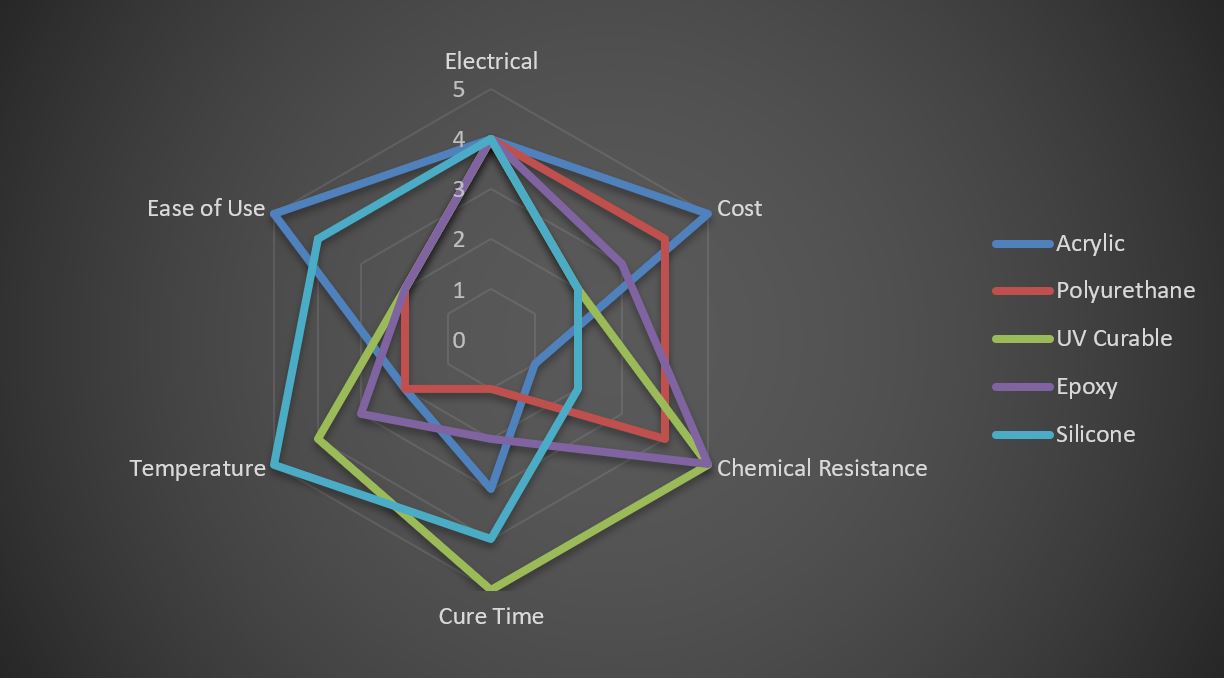
EMP Protection for Vehicles
With heavy reliance on electronic sensors and controllers to operate, one of the biggest threats to automotive malfunction is invisible electromagnetic waves that can disrupt circuit function, much like crosstalk can disable electrical cables. Conformal coatings discussed in the previous paragraph protect ECUs, PCBs and sensors from environmental attacks. In contrast, electrically conductive coatings protect components from electrical interference from neighbouring electronics that can prevent proper function. The same criteria for selecting the right conformal coating applies to conductive coating chemistry, where acrylic and water-based coatings are appropriate for vehicle cabin components. Conversely, thermosets like our epoxy conductive coatings or 842UR coating hold up well to chemical exposure and are more suitable for sensors and components under the vehicle’s hood. Noise reduction or attenuation of incoming electromagnetic signals is another crucial consideration when choosing a coating since this measures the level of protection the device receives from the coating. Shielding effectiveness is a measure of the relative loss of power from a signal at a given frequency as it moves from a transmitter to a receiver through a medium. Shielding effectiveness is measured in decibels (dB), with a higher measurement indicating a higher level of protection. Figure 3 below depicts the basic concept of attenuation and compares the relative shielding effectiveness of common coating fillers.
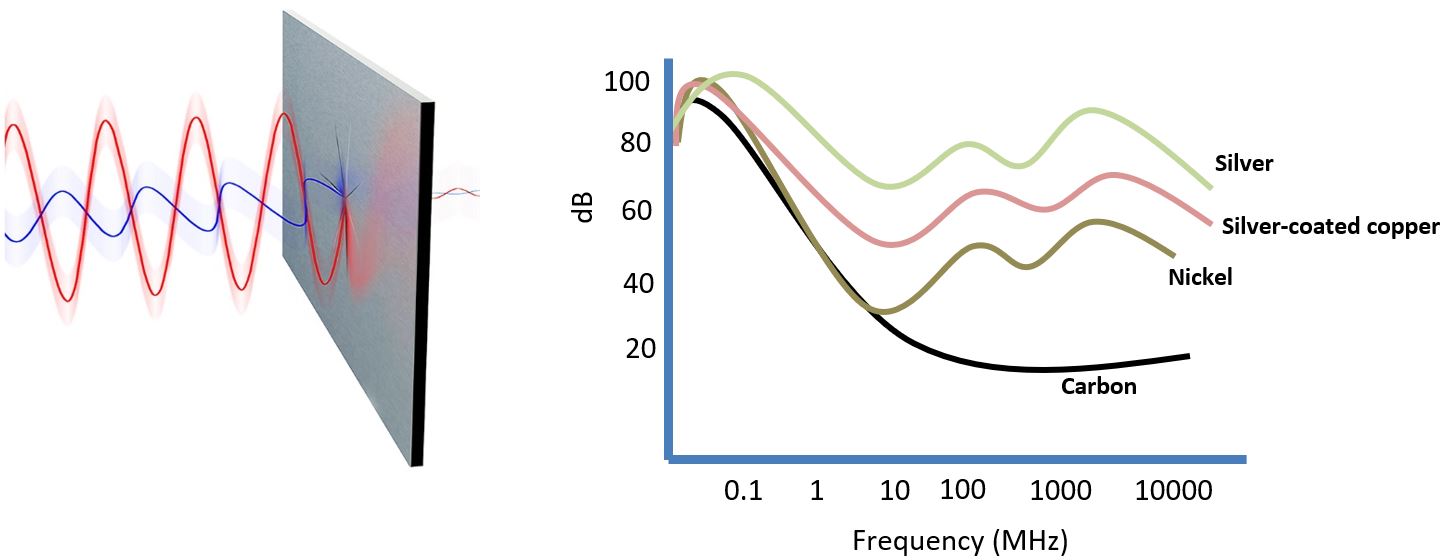
Unlike conformal coatings, which are applied directly to the circuitry, conductive coatings are typically used on the housing units along the outer perimeter; however, there are instances where specific components require shielding (known as package-level shielding). Figure 4 illustrates the different shielding types need to achieve electromagnetic compliance.
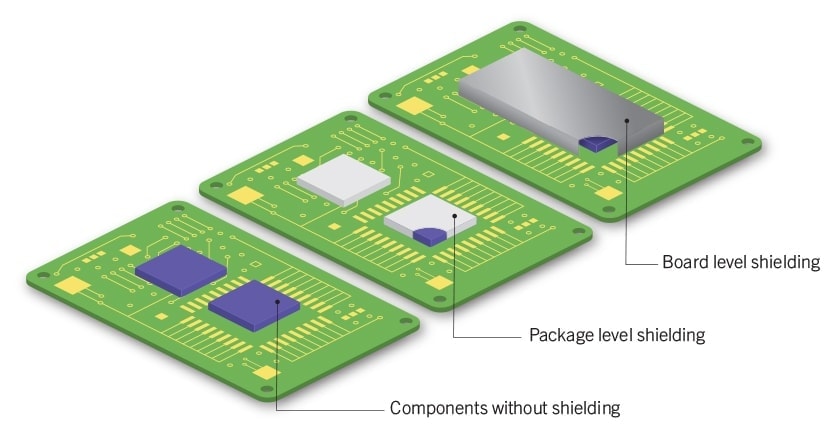
Enhancing Protection Using Potting Resins
The protection from external contaminants afforded by conformal coatings extends to physical impacts using potting and encapsulating resins like epoxy, polyurethanes and silicones. These resins cover circuit boards and sensors within housing units and help protect solder joints and surface mount devices (SMDs) from physical damage due to shocks, bumps, and direct impacts. Epoxy resins cure to a stiff, rigid finish and provide the most protection from physical impacts and exposure to harsh chemicals. Further, their excellent dielectric properties make them an ideal resin choice to encapsulate electric motor stators, grommets and relays, preventing the threat of electrical discharge and shorts. Low permittivity resins such as our 832HD, 832B and 832C are suitable for encapsulating receivers for chargers, controllers, and cable harnesses, ensuring high signal fidelity. Thermally conductive potting
compounds are flowable materials loaded with ceramic fillers that function the same way as a thermally conductive adhesive. The difference between the 2 product types is that application of adhesives is localized, whereas a potting compound intends to fill a volume. Products like our 832TC, 834B, 834FX and 834HTC help with heat dissipation around battery packs and modules. 834B, FX and HTC are flame retardant compounds that can help delay fire spread in battery systems.

The Importance of Vehicle Grease
A grease is a semi-solid material primarily used to reduce friction and wear between moving parts. Though lubricating grease is a vital component of automotive design, specialty greases also play an essential role in thermal regulation, electrical grounding and corrosion prevention. Drawing from several case studies, our electrically conductive greases are commonly used as makeshift electrical gap fillers and dual-purpose lubricating electrical contacts. Our 847 is a thicker, electrically conductive paste ideal for static applications that do not involve moving parts, such as helping bridge the power inverter to the electric motor. Our 846 and 8481 greases combine electrical conductivity with lubrication and can be used for grounding stray currents from inverters that corrode moving parts like belts or bearings.
Like our thermal adhesives, our thermal grease ensures that components within various systems do not overheat. The advantage of a thermal paste is the ease of rework, as worn processors can be accessed quickly and replaced if necessary.
Dielectric grease, like our 8462, is an electrically insulating compound yet is misunderstood in terms of its use. Its intended use is as a hydrophobic barrier on electrical connectors to prevent corrosion; circuit housing units such as those for motors on e-bikes use dielectric grease to seal around the seams to avoid exposure to moisture and corrosive elements. Dielectric grease is also suitable to use on the terminals of car batteries; however, users must take caution to ensure it’s not misused. Figure 6 illustrates the correct use of dielectric grease compared to electrically conductive grease.
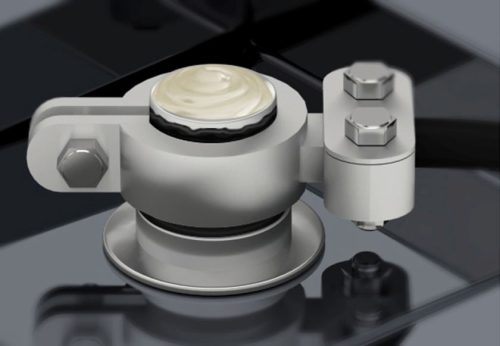
Sources
Automotive Conformal Coatings Market. (2021). Automotive Conformal Coatings Market by Material (Acrylic, Silicone, Epoxy, Polyurethane, Parylene), Component (ECU, PCB, Sensor, Battery Casing, LED and Infotainment System), Application Method, Vehicle Type, EV, Region – Global Forecast to 2025. Retrieved from https://www.marketsandmarkets.com/Market-Reports/automotive-conformal-coatings-market-11900039.html.

Hi! I currently own an EV automobile. I installed a NEMA 14-50r receptacle to plug my charge cable in. Would the carbon conductive grease be beneficial in improving conductivity, reduce corrosion, and reduce friction when inserting and removing the plug? I would typically leave it plugged in most of the time, with only on occasion unplug and reinsert the plug. Thanks!
Michael
The pins on my CITROEN has caused constance fault readings re dpf,heat box fault,brake light switch fault.when checked by my garage on their special computer it showed pin connection fault so we are using 846 conductive to hopefully solve my problem we will let you know normally it faults once a week ,month or even longer sometimes.